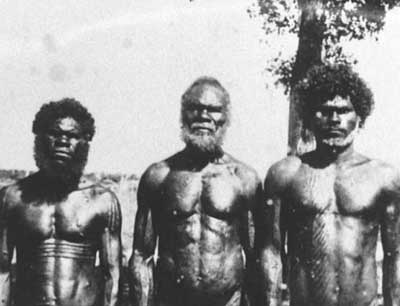Aboriginals around what is today Melbourne have been telling a story for thousands of generations – a tale of waters rising after the ice age. Without using written languages, they passed it down orally, generation to generation, with surprising accuracy. Now, a new study concluded that the story is actually really accurate, despite being passed on for 10,000 years.
“It’s quite gobsmacking to think that a story could be told for 10,000 years,” Nicholas Reid, a linguist at Australia’s University of New England specializing in Aboriginal Australian languages, said. “It’s almost unimaginable that people would transmit stories about things like islands that are currently underwater accurately across 400 generations.”
Melbourne is the capital and most populous city in the state of Victoria, and the second most populous city in Australia. It’s port, Port Phillip Bay sprawls over 750 square miles, creating a very specific briny coastal environment. The waterway around it is very salty and extremely shallow – falling under 30 feet in many places. In fact, it’s so shallow that 10,000 years ago, when the temperature was much lower than today and more water was frozen at the poles, the area was actually a land pasture grazed by kangaroos.
But as the ice started to melt, the pasture was slowly flooded by waters. This process was documented by the aboriginals – the local inhabitants at the time; therefore today, even though some tribes have disappeared and the story passed through countless individuals, most aboriginals still remember the story – some tribes today can even point to islands that no longer exist—and provide their original names.
Linguists and a geographer working together confirmed the truthfulness of 18 Aboriginal stories—many of which were transcribed by early settlers before the tribes that told them succumbed to murderous and disease-spreading immigrants from afar (today, we call those European explorers and settlers). They combed through the stories, using scientific reconstructions of prehistoric sea levels to date the origins of each of the stories.
The results were quite surprising – the stories and the geographic data fit. But how could the story be passed on for so long?
“There are aspects of storytelling in Australia that involved kin-based responsibilities to tell the stories accurately,” Reid said. That rigor provided “cross-generational scaffolding” that “can keep a story true.”
Interestingly enough, this is not a unique case – stories have been told with surprising accuracy for thousands of years in other parts of the world as well.
“There’s a comparably old tradition among the Klamath of Oregon that must be at least 7,700 years old—it refers to the last eruption of Mount Mazama, which formed Crater Lake,” Nunn said. “I’m also working on ancient inundation stories and myths from India, and I’ve been trying to stimulate some interest among Asian scholars.”
So far, the results haven’t been published in a peer reviewed journal, but researchers plan to do so in the near future.










